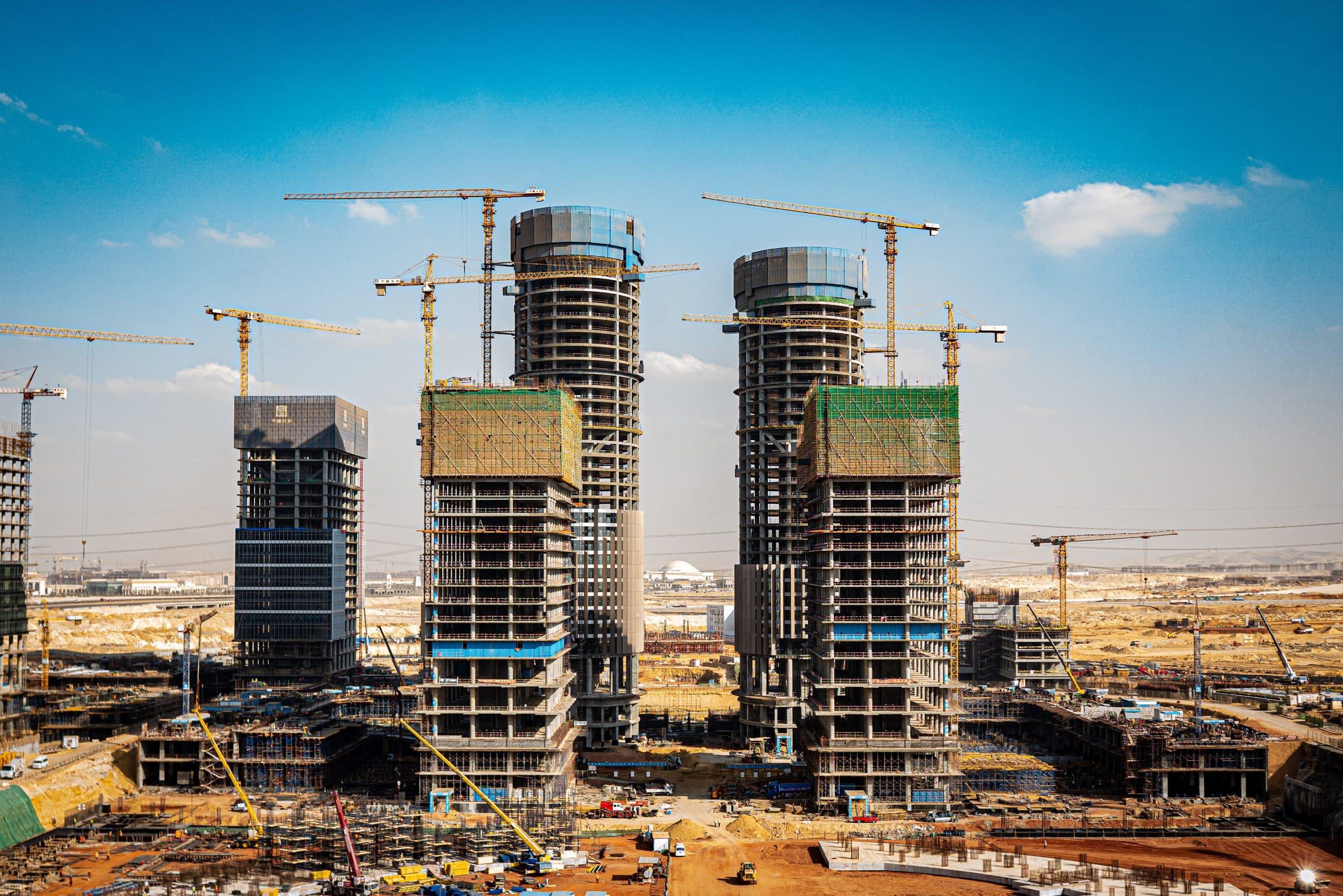Construction underway in Egypt’s New Administrative Capital (source WikiMedia Commons)
Egypt is constructing a whole new capital, in the middle of the desert to the east of Cairo. It is an immense project, and the most important development plan in President Abdel-Fattah Al-Sisi’s “Egypt Vision 2030”. At first sight, the project seems ambitious, modern and aspirational. However, the planned city has major caveats and it is questioned whether the project will eventually aid underprivileged citizens in the old city of Cairo.
The New Administrative Capital
Of the 104 million inhabitants of Egypt, around 20 million live in Cairo. The already over-crowded city is expected to double in population by 2050. Traffic congestion has already become an immense problem throughout the capital. Egyptian institutions are scattered around Cairo, which proves heavily ineffective in the congested city.
The New Administrative Capital (NAC) is envisioned to solve these issues and to alleviate the population pressure on Cairo. Located around 45 kilometers east of Cairo, the project will cost around 40 billion dollars. It will accommodate massive buildings, universities, mosques, cathedrals and an enormous people’s square. A brand-new public transport network shall connect the NAC with old Cairo. Sisi’s prestige project is topped off with the largest flagpole of the world, right in de middle of the NAC.
Construction is under way since 2015, and many buildings are close to finished. It is expected that in the upcoming years, first ministries will move to the new area.
Accessible to all?
While at first sight, the project looks like a much-needed modernization of the Greater Cairo region, there are many concerns over this massive project in the desert. It seems improbable that lower- and middle-class Egyptians will be able to move to the new district. Two-bedroom apartments will be sold at $50,000 – well exceeding the average GDP per capita of $3000 in the country. The government has said that there will be social housing in the NAC, but it is unclear in what quantity. For now, the NAC seems destined to become sealed-off community for the rich, to accommodate Egypt’s commercial upper-class. The area will include a massive commercial district, intended to house Egypt’s neo-liberal private sector. For decades, Egypt’s authoritarian leaders appease this upper-class to assure economic stability. President al-Sisi has previously side-lined the Egyptian commercial class. As a former military general, he has given the Egyptian military vast amounts of political power. Al-Sisi sees this project as a chance to re-invigorate support of Egypt’s neo-liberal upper-class for his regime.
Of course, the project will be beneficiary for the military too. It owns 51 percent of the company that oversees the project. It is set to profit immensely from property and housing in the area. The NAC will house the largest ministry of defense in the world too, topping the US’ Pentagon. As it stands the military’s and Sisi’s tight control over Egyptian society will only increase through this project.
Coup-proofing the capital
Many Egyptian actors profit from the construction of the NAC, it seems – except the lower- and middle-class. In this regard, Al-Sisi heads to the same pitfall of former President Hosni Mubarak, ousted in the 2011 Arab Spring. However, he intends not doing so. By using gigantic repression on non-governmental organizations, independent media and civil activists, al-Sisi has squashed almost all potential of anti-government protests. The famous Tahrir Square, the central location of 2011 protesters, is now constantly guarded by security personnel. With the new capital, Egypt’s ruler is detached from society. Sisi thus completely removes Egypt’s political institutions from the public realm – as the underprivileged Egyptian will not be able to enter the new city. With various forms of authorization through facial recognition and AI, the government currently controls everything in the NAC. It is a new dimension of the well-known tactics of the authoritarian leader to make society “coup-proof”.
The rich will be richer
In the end, the NAC will not favor the lower-and middle-class Egyptian. It may only exacerbate congestion in the Greater Cairo area, as the NAC seems heavily car-dependent. Moreover, two-thirds of the Egyptian population lives under the poverty line and it is unclear how this new project will benefit them in the near future. For now, the project seems a massive waste of resources to accommodate the rich few. Meanwhile, basic goods and services are becoming more scarce for the others – the rapidly increasing population of Cairo.
Sources: World Crunch Zawya Al Jazeera Reuters The Guardian Middle East Monitor
Photo: WikiMedia Commons

